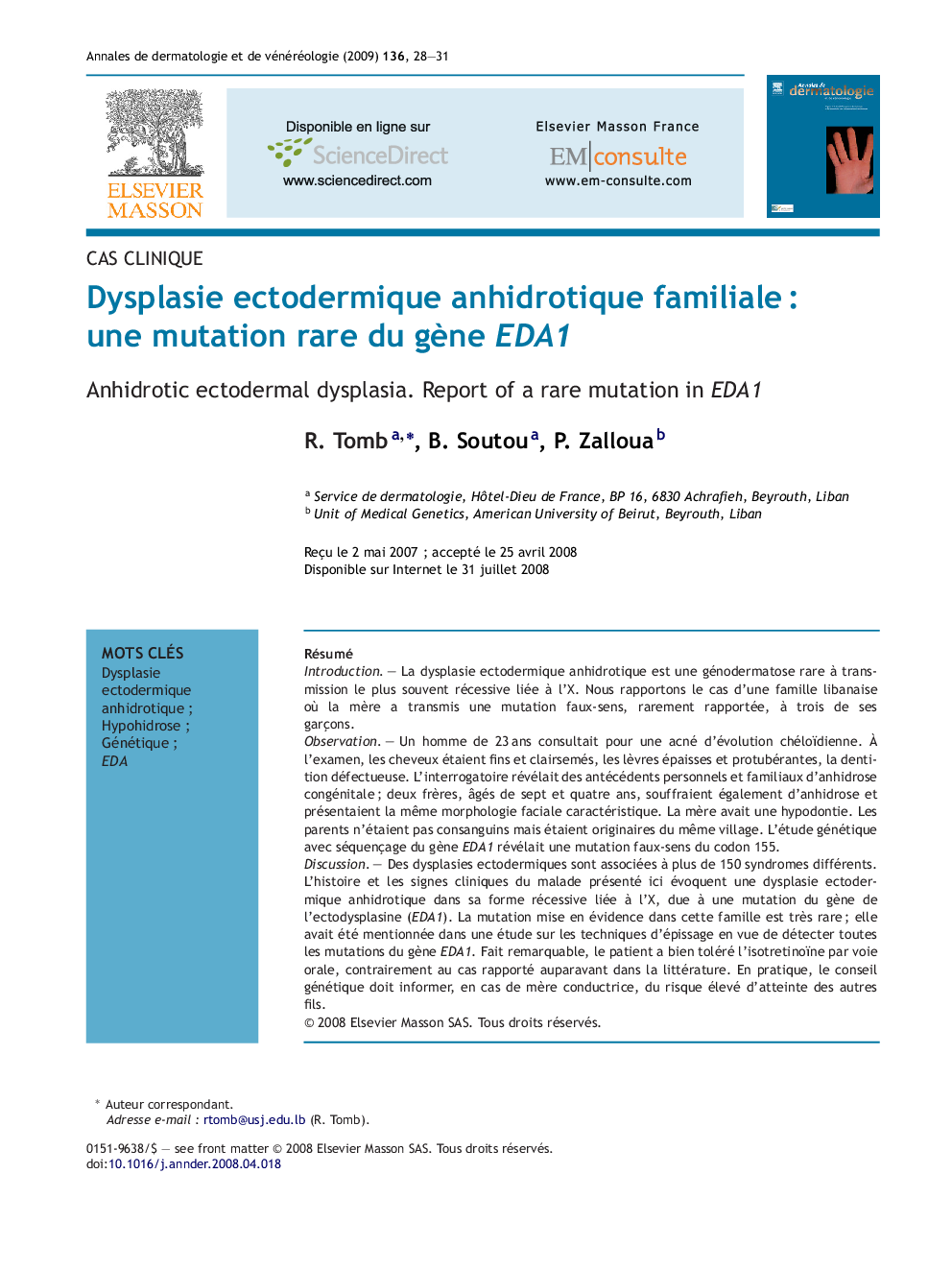| Article ID | Journal | Published Year | Pages | File Type |
|---|---|---|---|---|
| 3188886 | Annales de Dermatologie et de Vénéréologie | 2009 | 4 Pages |
Abstract
Ectodermal dysplasias are currently found in more than 150 syndromes. The patient's history and the clinical signs suggest the X-linked recessive form of anhidrotic ectodermal dysplasia due to a mutation in EDA1 gene encoding the ectodysplasin. The mutation found in this family is very rare and was mentioned once in a study on splicing forms that permit detection of all EDA1 mutations. Besides, this patient tolerated oral isotretinoin perfectly well, unlike another case reported once in the literature. Finally, genetic counselors must inform carrier mothers of the high recurrence rate among male offspring.
Related Topics
Health Sciences
Medicine and Dentistry
Dermatology
Authors
R. Tomb, B. Soutou, P. Zalloua,
